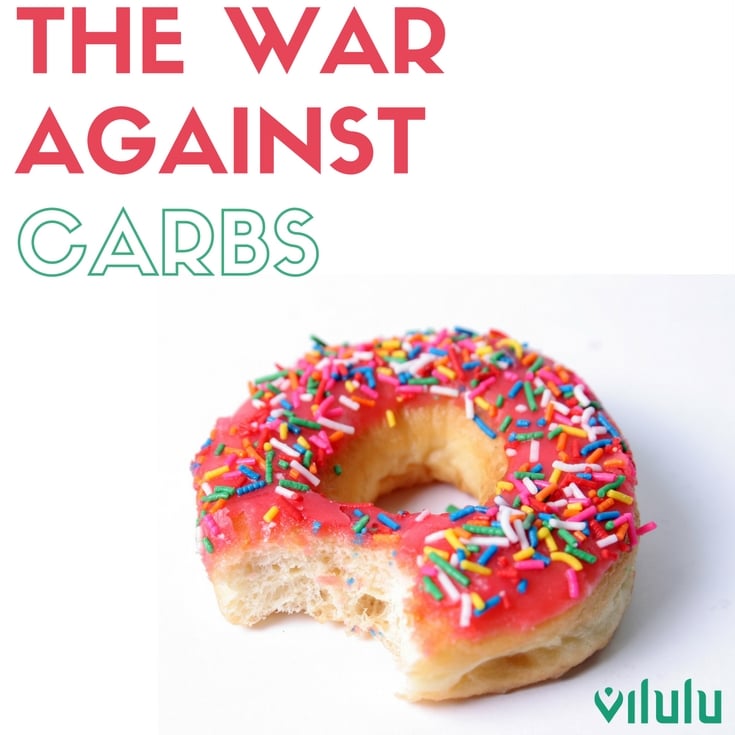A Carb is a Carb, Right?
A Carb is a Carb, Right?

Unless you’ve been living on another planet for the last 20 years, you’ll have heard about the amazing weight loss that can be achieved on a low-carb diet. You might even have tried one. Ever since Atkins, people around the world have been waking up to the idea that it’s carbs, not fats which are the enemy. The increase of carbohydrates in our diets over the last 30 years, caused partly by the war against fat, has been one of the leading factors in the obesity and diabetes epidemics that are sweeping through the developed world. It seems then that carbohydrates are increasingly being seen as something to be avoided. This may be true some of the time, but are all carbohydrates equal?
Bad Carbs
There are some carbohydrates which are undoubtedly bad for us, and most of us have been eating far too many of them. The list includes white bread, white rice, many pastas, and of course cakes, cookies, candies and anything else filled with sugar or refined flours. These cause our blood glucose levels to spike, leaving us constantly craving more food. They also increase our chances of gaining weight and developing type 2 diabetes[1].
Carbs as a source of nutrients
If you’ve ever tried cutting your carbs to 20-50g a day, you’ll probably recall how you soon started fantasizing about fruit and vegetables which you wouldn’t have given a thought to whilst on your old carb-laden diet. This wouldn’t simply have been a case of wanting what you couldn’t have. It might have been your body’s way of telling you that you were missing out on vital nutrients. The carbohydrates which we get from certain fruits and vegetables are clearly healthy, perhaps even essential[2].
Some carbs are different from others
In the past, nutritionists listed carbohydrates as either ‘simple’ or ‘complex’. Essentially, carbohydrates formed mostly of sugars were known as ‘simple carbohydrates’, whilst others were generally labelled ‘complex’. Today we know that distinction doesn’t really give us a firm understanding of the nutritional value of what we are eating[3].
More recently, Glycemic Index (GI) has been seen as a better way of determining the differing effects of carbohydrates on blood sugar levels, with many ‘complex’ carbohydrates, such as white rice and many cereals having a high GI rating[4]. However, criticisms of this approach remain, with claims that there are large individual differences in GI response[5], while studies have shown that fruit is far less likely to increase the risk of diabetes compared to fruit juices, despite the fact that they have similar GI ratings[6].
Are grains good or bad?
Things are a little more complicated when it comes to grains. In the late 19th century, the invention of industrialized roller mills changed the way we process grains. They became easier to digest and chew, but much lower in nutritional quality and quantity[7]. Studies have found that eating whole-grain carbohydrates is healthy, reducing the chances of suffering from cardiovascular disease[8], and that white rice significantly increases diabetes risk, whilst brown rice can decrease the risk[9]. Then to make matters worse yet, many of the grains that are consumed today are genetically modified.
So which carbs should you be eating?
The results of these studies show that carbohydrates are definitely not all equal. However, it is important to note that simply because it says ‘whole grain’ on the label this may not always indicate a healthy product and that brown rice may just be white rice with food dye added. It is important to check the labels to make sure that what you buy is genuinely ‘whole grain’[10].
List of good carbs[11]
Kale, spinach, broccoli, peas, sweet potatoes, tomatoes, avocados, berries, oranges, pears, melons, quinoa, lentils, whole-grain bread, whole-grain, pasta and brown rice are low GI and packed full of nutritional goodness.
Top tips for getting the right sort of carbs
- When making carb choices, ask yourself whether what you’re looking at has high nutritional value or not. High fiber or vitamin content, or low GI, might make it a healthier choice.
- Avoid snacking between meals as this is when most of us make the worst choices. If you must snack, reach out for something that’s high in nutritional value such as berries, oranges, unsalted nuts or seeds.
- Say goodbye to sugar-laden soft drinks, candy, cookies, cakes and pastries. Satisfy your cravings for sweet food with berries and small quantities of good quality dark chocolate. Think quality rather than quantity.
- Find interesting ways to incorporate more brightly colored healthy vegetables into your daily diet. Green leafy vegetables, peppers and sprouts are all great in stir-fries. Replace fries and white potatoes with roast or pureed squashes and sweet potatoes.
- Significantly cut down on white bread, white pasta and rice. Better still, cut them out altogether.
- At mealtimes aim to fill at least 1/3 of your plate with vegetables – the more colorful, the more likely they are to be packed with nutrients.
- Remember that some carbs, such as those found in bran, beans, spinach, okra, almonds, raspberries and apricots[12] are high in fiber so are not fully absorbed by the body. The carbs/calories in these types of food are therefore a good source of nutrition.
- Take a vow today to cut out processed foods altogether. These are usually high in sugar and are often stripped of nutrients. In time, you’ll wonder why you ever touched this type of food - it doesn’t even taste good!
[1] http://ajcn.nutrition.org/content/79/5/774.full
[2] https://www.hsph.harvard.edu/nutritionsource/what-should-you-eat/vegetables-and-fruits/
[3] https://www.hsph.harvard.edu/nutritionsource/carbohydrates/
[4] https://en.wikipedia.org/wiki/Glycemic_index
[5] http://www.cell.com/cell/pdf/S0092-8674(15)01481-6.pdf
[6] http://care.diabetesjournals.org/content/31/7/1311.full
[7] https://www.hsph.harvard.edu/nutritionsource/whole-grains/#ref1
[8] Mellen PB, Walsh TF, Herrington DM. Whole grain intake and cardiovascular disease: a meta-analysis. Nutr Metab Cardiovasc Dis. 2008;18:283-90.
[9] Sun Q, Spiegelman D, van Dam RM, et al. White rice, brown rice, and risk of type 2 diabetes in US men and women. Arch Intern Med. 2010;170:961-9.
[10] http://www.webmd.com/diet/obesity/features/not-all-carbs-are-created-equally#2
[11] http://articles.chicagotribune.com/2012-01-25/health/sc-health-0125-carbs-20120125_1_carb-grains-glucose
[12] http://www.healthhype.com/list-of-high-fiber-foods-soluble-and-insoluble-fiber-chart.html
OFFICE HOURS
Monday
9:00am - 11:00am
3:00pm - 6:00pm
Tuesday
5:30pm - 6:30pm
Wednesday
9:00am - 11:00am
3:00pm - 6:00pm
Thursday
9:00am - 11:00am
Friday
Closed
Saturday
Closed
Vilulu
2051 Reed Road Suite B
Fort Wayne, IN 46815
(855) 784-5858


